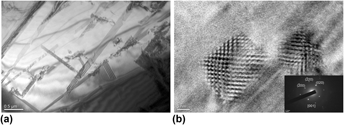Crossref Citations
This article has been cited by the following publications. This list is generated based on data provided by
Crossref.
Zhao, Haikun
Jiang, Xianan
and
Wu, Liguang
2016.
Boreal Summer Synoptic-Scale Waves over the Western North Pacific in Multimodel Simulations.
Journal of Climate,
Vol. 29,
Issue. 12,
p.
4487.
Li, Hang
Jie, Jinchuan
Zhang, Quanye
and
Li, Tingju
2016.
Effect of annealing treatment on the microstructures, mechanical, and wear properties of a manganese brass alloy.
Journal of Materials Research,
Vol. 31,
Issue. 10,
p.
1491.
Li, Hang
Liu, Shi Chao
Jie, Jin Chuan
and
Li, Ting Ju
2017.
Influence of Precipitation Hardening on the Sliding Wear Behavior of a Cu-Zn-Al-Mn-Si Based Brass Alloy.
Materials Science Forum,
Vol. 898,
Issue. ,
p.
355.
Wang, Lu
Li, Tim
and
Nasuno, Tomoe
2018.
Impact of Rossby and Kelvin Wave Components on MJO Eastward Propagation.
Journal of Climate,
Vol. 31,
Issue. 17,
p.
6913.
Li, Kuiping
Feng, Lin
Liu, Yanliang
Yang, Yang
Li, Zhi
and
Yu, Weidong
2018.
The Northward-Propagating Intraseasonal Oscillations in the Northern Indian Ocean during Spring–Early Summer.
Journal of Climate,
Vol. 31,
Issue. 17,
p.
7003.
Liang, Ping
Lin, Hai
and
Ding, Yihui
2018.
Dominant Modes of Subseasonal Variability of East Asian Summertime Surface Air Temperature and Their Predictions.
Journal of Climate,
Vol. 31,
Issue. 7,
p.
2729.
Jiang, Xianan
Adames, Ángel F.
Zhao, Ming
Waliser, Duane
and
Maloney, Eric
2018.
A Unified Moisture Mode Framework for Seasonality of the Madden–Julian Oscillation.
Journal of Climate,
Vol. 31,
Issue. 11,
p.
4215.
Dong, Zhuangzhuang
Jie, Jinchuan
Dong, Bowen
Wang, Xianlong
Liu, Shichao
and
Li, Tingju
2020.
Effect of aluminum addition on microstructure and properties of a novel nickel–silicon-containing brass.
Journal of Materials Research,
Vol. 35,
Issue. 12,
p.
1598.
Bie, Lifu
Chen, Xiaohong
Liu, Ping
Zhang, Tao
and
Xu, Xiangliu
2020.
Morphology Evolution of Mn5Si3 Phase and Effect of Mn content on Wear Resistance of Special Brass.
Metals and Materials International,
Vol. 26,
Issue. 4,
p.
431.
Baroni, L.F.S.
Silva, R.
Vacchi, G.S.
Sordi, V.L.
and
Rovere, C.A.D.
2020.
Influence of Ce on the corrosion properties of Fe-Mn-Si-based shape memory stainless steel.
Materials Today Communications,
Vol. 25,
Issue. ,
p.
101649.
Kant, Ravi
Batra, U.
and
Prakash, U.
2022.
Investigation of Mechanical and Wear Characteristics of Forged Fe-Al-C Intermetallic Quaternary Alloyed with Zr/Ti.
Journal of Materials Engineering and Performance,
Vol. 31,
Issue. 4,
p.
3127.
